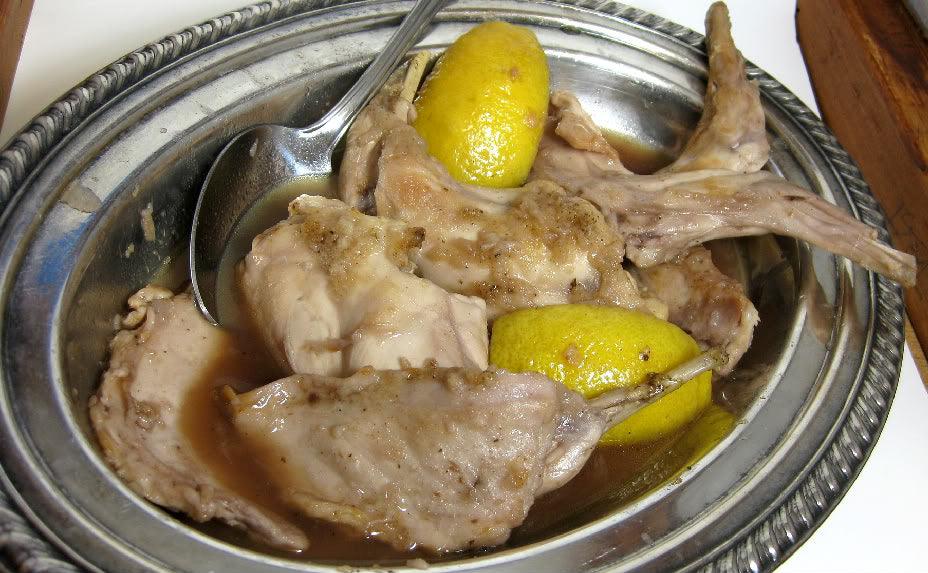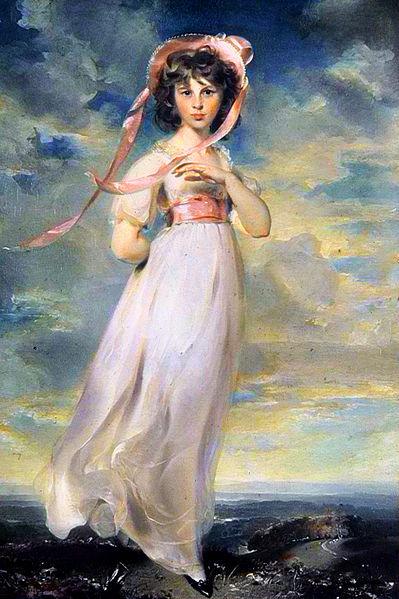Jane-O-Lantern: Picture Your Pumpkin Two Ways
 The celebration now known as Halloween has its roots in the Celtic festival of Samhain, one of the four Druid “Bonfire” festivals. Celebrated on November 1, midway between the Autumn and Winter Solstices, some scholars believe that it marked the end of the old year and start of the new. Samhain (pronounced sów-en) was not a god to be worshipped, but rather a term meaning “The End of Summer”. It was at this time that the harvest was brought in, preparations for winter completed, debts were settled and the dead buried before the coming winter. In the highly superstitious Celtic culture, it was also believed that at this time when “a new year was being stitched to the old” the veil between the present world and the next was especially thin, allowing the spirits of the departed, both good and evil to roam.
Because of this belief, October 31 became a highly superstitious night. Some used the opportunity to entreat the dead for guidance in the coming year. Others carried on traditions involving the revelation of one’s sweetheart or good fortune for the coming year. Towards the close of the evening priests and townsfolk, dressed as spirits would parade through the village in order to lead the wandering ghosts back to their resting places. Far from being a burning Hell, the Celtic “underworld” was a place of light and feasting, much more akin to the Christian ideal of Heaven.
As it was also the close of the year, the bonfire, kindled by the priests served an extra purpose. Each villager would let their hearth fire die out that night to be lit afresh by embers from the bonfire, symbolizing a new year and hope for prosperity. During the night of spooks and ghosts, homes would be lit by rustic lanterns carved from turnips (known early on as neeps) beets and rutabagas. Pumpkins would be used later, as they were brought to Europe from the New World in the 17th century. These flickering lights were set out in hopes of welcoming home friendly souls and chasing away the evil spirits who wandered that night.
Jane Austen would have been aware of these celebrations and divination rites; however, as the daughter of an Anglican clergyman, it is doubtful that she would have partaken in such goings on. Surely, growing up in a houseful of boys, she would have celebrated with a bonfire on Guy Fawkes night, but we nowhere find that she dabbled in any of the occultic practices of the more ancient holidays still celebrated by the local villages. She mentions neither these holidays or her feelings towards them. The trappings of Halloween which we now so regularly employ would have been foreign to her, even if their roots lay deep in the English history, of which she was so fond.
That being said, the idea for a "Jane-O-Lantern", was a fun one. The results, I think, would have shocked Jane, but give a friendly nod to our favorite author during the harvest celebrations.
The celebration now known as Halloween has its roots in the Celtic festival of Samhain, one of the four Druid “Bonfire” festivals. Celebrated on November 1, midway between the Autumn and Winter Solstices, some scholars believe that it marked the end of the old year and start of the new. Samhain (pronounced sów-en) was not a god to be worshipped, but rather a term meaning “The End of Summer”. It was at this time that the harvest was brought in, preparations for winter completed, debts were settled and the dead buried before the coming winter. In the highly superstitious Celtic culture, it was also believed that at this time when “a new year was being stitched to the old” the veil between the present world and the next was especially thin, allowing the spirits of the departed, both good and evil to roam.
Because of this belief, October 31 became a highly superstitious night. Some used the opportunity to entreat the dead for guidance in the coming year. Others carried on traditions involving the revelation of one’s sweetheart or good fortune for the coming year. Towards the close of the evening priests and townsfolk, dressed as spirits would parade through the village in order to lead the wandering ghosts back to their resting places. Far from being a burning Hell, the Celtic “underworld” was a place of light and feasting, much more akin to the Christian ideal of Heaven.
As it was also the close of the year, the bonfire, kindled by the priests served an extra purpose. Each villager would let their hearth fire die out that night to be lit afresh by embers from the bonfire, symbolizing a new year and hope for prosperity. During the night of spooks and ghosts, homes would be lit by rustic lanterns carved from turnips (known early on as neeps) beets and rutabagas. Pumpkins would be used later, as they were brought to Europe from the New World in the 17th century. These flickering lights were set out in hopes of welcoming home friendly souls and chasing away the evil spirits who wandered that night.
Jane Austen would have been aware of these celebrations and divination rites; however, as the daughter of an Anglican clergyman, it is doubtful that she would have partaken in such goings on. Surely, growing up in a houseful of boys, she would have celebrated with a bonfire on Guy Fawkes night, but we nowhere find that she dabbled in any of the occultic practices of the more ancient holidays still celebrated by the local villages. She mentions neither these holidays or her feelings towards them. The trappings of Halloween which we now so regularly employ would have been foreign to her, even if their roots lay deep in the English history, of which she was so fond.
That being said, the idea for a "Jane-O-Lantern", was a fun one. The results, I think, would have shocked Jane, but give a friendly nod to our favorite author during the harvest celebrations.

This first design is quite easy. You will need:
- 1 White or Orange Pumpkin (size, your choice)
- White paint, if using an orange pumpkin (I used latex based paint) and paintbrush (I used a 1" foam brush)
- 1 large Self Stick Vinyl Decal (Austentation's Jane Austen Silhouette Stickers) or a printed silhouette of Jane Austen to use as a template
- Black marker and black paint, if using template.
- Clear sealer spray, if you intend to leave your pumpkin out of doors.
Wash and dry your pumpkin. If you are using a white pumpkin or prefer it to be white (or any other color) paint in your desired shade, using a small sponge paintbrush. You will probably need two coats. Be sure to place newspaper or other covering under your pumpkin while you paint, and allow the paint to dry between coats.
If using a vinyl decal, apply decal to pumpkin surface once paint is dry. When placing it on the painted pumpkin, you will have one shot, to get it where you want it placed (pulling it off will peel up the paint) A coat of clear sealer used between the paint and vinyl will probably eliminate this worry. If you lightly place it on the pumpkin and gently smooth the decal from the center to the edges, from the top down, you will get a smooth application, in spite of the pumpkin's ridges.
If using a template (above) print and cut out your template. Place it on the pumpkin where you would like it and trace around it with the permanent marker. Remove the template and fill in the area with paint. Complete your project with a coat of clear sealer spray and display with pride (or prejudice, if you prefer.)

If you are into carving your pumpkins for decoration, a similar effect can be achieved using the same template. You will need:
- 1 Pumpkin
- 1 sturdy knife1 flexible paring knife
- 1 permanent marker.
- 1 spoon
- 1 Jane Austen template (Austentation's Cardstock Diecuts)
- 1 small candle, flashlight or battery operated votive
Begin, as you would any carved pumpkin project, by slicing off the top (or cutting a circle from the top) of your pumpkin and scooping out the insides. These can be discarded or you can wash the seeds and save them for toasting with salt and oil (a delicious and nutritious snack!)
Next, choose the location for your design. Use a permanent marker to trace the design onto your pumpkin. Once done, you have two options: cut entirely through the pumpkin flesh for a traditional "lantern" effect, or leave a thin layer of flesh in you outline for a gentle glow.

If you choose the latter method, you will need to gently cut through the outer skin along this line using your flexible paring knife. Once the silhouette has been cut, use the tip of the knife to gently pry up the pumpkin's "peel" which is inside your design. Once all the bright orange peel is gone, use a spoon to smooth the remaining area of flesh. Don't dig too deeply or you will risk puncturing your design.
Once the visible layer of flesh is smooth, use the spoon on the inside of the pumpkin to scrape away all but a thin layer of remaining pumpkin flesh. The contrast of light and dark orange is lovely in natural light, and enchanting once the lantern has been lit.
Light your candle and enjoy your hard work! If you use a traditional candle to light your lantern, you will need to keep the top or "lid" off of the pumpkin for adequate air flow. A battery operated votive or small flashlight does the trick with no need of extra air, and no fire hazard risk.



